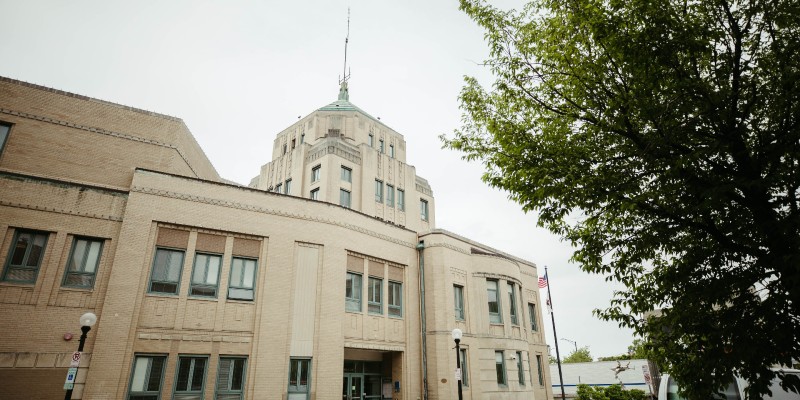In June, we addressed the staggering increase in gun violence in Champaign-Urbana, imploring our city leaders to take definitive action to address this overwhelming problem, stating:
It’s time for a community wide effort to address this. Unfortunately, there are no easy answers. We are in a state of emergency, but quick fixes won’t change the trajectory we are on. It’s time for city leaders to do more than make proclamations, have conversations, and close parking lots. It’s time to fund solutions and invest in the groups that know what needs to be done, and that does not mean investing in more law enforcement.
We reached out to community organizers who have already been invested in gun violence prevention strategies. Karen Simms, program director at CU Trauma and Resilience Initiative (CU Tri), emphasized the need to focus on research-based, data-driven, community-based violence prevention.
We followed up on the issue in September when we reached out to our city leaders to ask them about their plans to address gun violence in C-U. At the time they had few ideas, and in the meantime the problem continues to worsen. In June the City of Champaign reported at least 115 shooting incidents. As of November 15th, according to the Blueprint, that number had increased to 235. Just last week, two teenagers were charged in the shooting death of a Lyft driver.
In December, City Manager Dorothy David presented a report, the Community Gun Violence Prevention Blueprint, to the Champaign City Council for consideration. It passed out of study session unanimously, and will be voted on this month. The 118 page report includes extensive data on occurrences of gun violence in Champaign over the past several years, background on how the City has addressed this issue in the past, and a plan for using funds allocated by the America Rescue Plan Act. Gun violence prevention was identified as one of the top three priorities for spending the funds, and the Blueprint will use $6.2 million of the $25 million granted to the City of Champaign.
The plan calls for restructuring the Office of Equity, Community and Human Rights into a separate department, led by a Chief Equity Officer. There would be a Community and Safety Division within the department, solely focused on implementing and coordinating the Blueprint.
It looks promising and contains many of the components Simms mentioned when we spoke to her, including hospital interventions, and a broader street outreach/violence interruption initiative. Groups such as CU Tri and TRUCE have utilized these strategies in the past, but have suffered from lack of funding and personnel. We encourage you to read the full proposal. In the meantime, we have a few takeaways.
There is a lot of emphasis on getting at the root causes of gun violence in the community, and that’s a good thing.
The report summary states that “city staff have taken a deeper dive into addressing the root causes of community gun violence, which include income inequality, poverty, underfunded public housing, under-resourced public services, achievement gaps in schools, lack of opportunity and perceptions of hopelessness, and easy access to firearms by high-risk people.”
As we’ve stated before, there are no quick fixes when it comes to gun violence prevention. City staff acknowledges that although there are numerous organizations and service agencies in town, they’ve been limited in their scope of being able to broadly address this problem, due to “limited staffing, resources and structure for the City and community partners, including no physical space for service delivery and no sustainable funding sources.”
The Blueprint lays out targeted actions that pull in community partners for each action, including DREAAM, CU Tri, First Followers, and others. They set aside funding for each partnership, including salaries for personnel and needed resources. Targeted groups include those who have been actively involved in firearm related violence, youth (age 10 to 19) that are at high risk of becoming involved in firearm related violence, formerly incarcerated individuals reentering the community, and those experiencing trauma or harm due to gun violence.
The City is looking to programs that have been successful in other communities to develop solutions.
Operation Peacemaker Fellowship in Richmond, California and Oakland Ceasefire are programs that inform much of the plans that have been laid out, including adding “an organized hospital-based intervention, street outreach workers/violence interrupters, youth and family supports and regular program monitoring and evaluations.”
The Blueprint is not about surveillance and policing
This could be due to the parameters set by the federal government on how ARPA funds are to be used. Law enforcement strategies do figure into the goal of reducing gun violence, mostly in the form of improving police-community relations and using crime data analysis to better focus where resources are most needed. The Blueprint proposes utilizing the SARA (Scanning, Analysis, Response and Assessment) model of addressing the problem from a law enforcement perspective. We’ve explained our thoughts on spending more on surveillance to curb violent crime, and while we’re disappointed in the City’s decision to go that route, it is heartening to see this plan emerge.
These initiatives are funded through 2023. That’s probably not enough.
The proposal allocates $3.2 million for 2022 and $3 million for 2023. After that, the City is counting on wiggle room in the budget on the other side of the pandemic, as well as philanthropic donations. Time will tell and data will show if their initiatives are working. Hopefully we will see positive results, warranting a push to maintain established programs in the budget.
This proposal seems like a positive step forward. It’s difficult to overcome the reality of the wide availability of guns in our community and our nation. It’s difficult to break the chain of circumstances and choices that lead young people to violence. It’s difficult to find practical solutions to address generations of poverty and systemic racism. We hope this proposal is a beginning.
The Editorial Board is Jessica Hammie, Julie McClure, Patrick Singer, and Mara Thacker.








